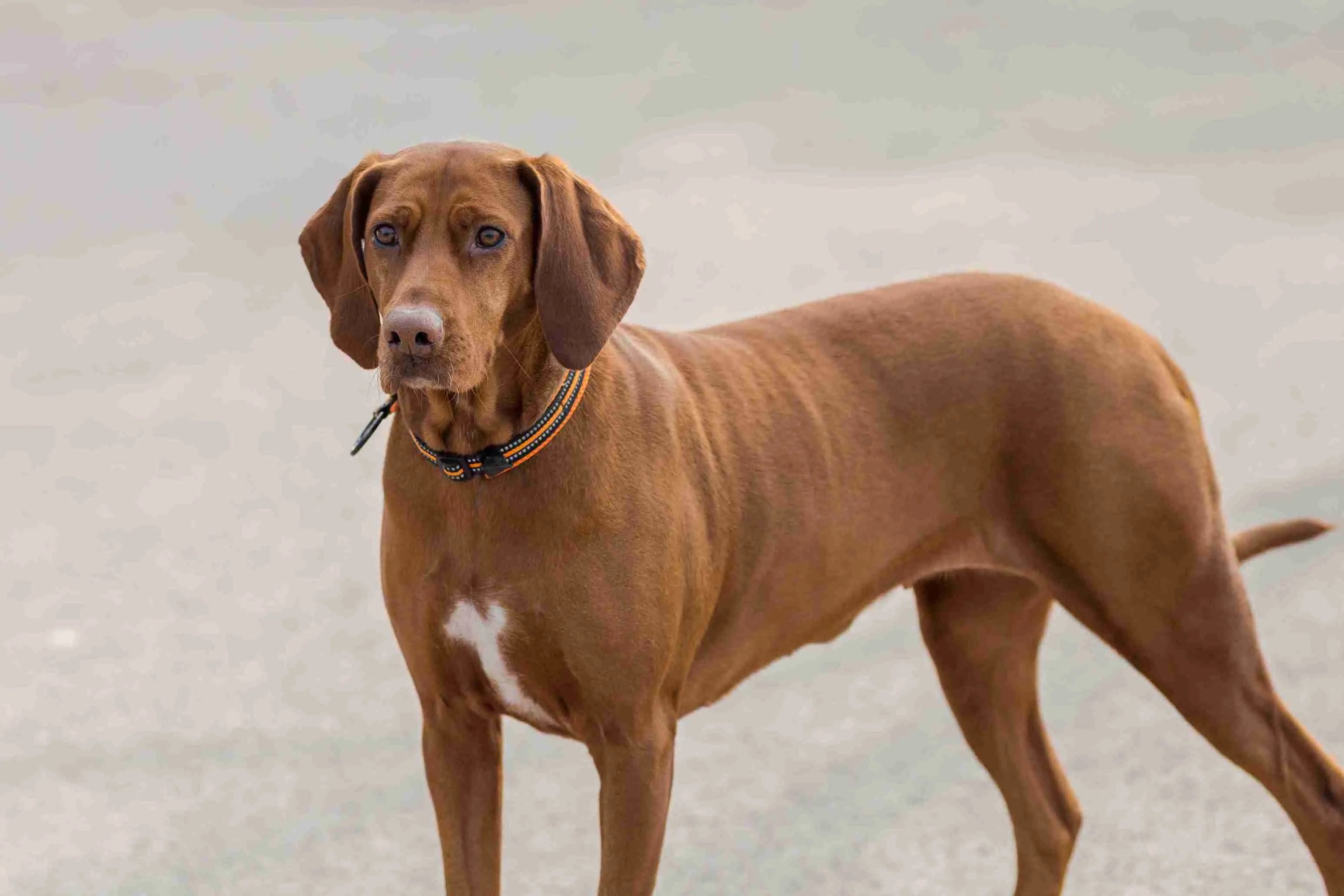Vizsla
America’s Energetic and Affectionate Hunter
1. Introduction to the Breed
The Vizsla, securing the #33 spot in the 2024 American Kennel Club (AKC) rankings, is an energetic and affectionate breed admired for its sleek, golden coat and versatile hunting abilities. Known as the “Hungarian Pointer,” Vizslas excel as field dogs, sport competitors, and loyal family companions. Their high energy and velcro-like devotion make them ideal for active owners in suburban or rural homes, where their athleticism and warm personality bring joy and companionship.
2. History of the Breed
Originating in Hungary centuries ago, Vizslas were bred by Magyar tribes for hunting game birds and small mammals, valued for their speed, agility, and keen noses. Nearly extinct after World War II, the breed was revived by dedicated breeders. Introduced to the U.S. in the 1950s and recognized by the AKC in 1960, Vizslas gained popularity for their prowess in field trials, agility competitions, and as affectionate pets. Their elegant appearance and hunting legacy continue to captivate outdoor enthusiasts.
3. Physical Characteristics
- Typical Size and Weight: Vizslas are medium-sized, standing 21–24 inches tall at the shoulder. Males weigh 55–65 pounds, while females range from 45–55 pounds, with a lean, muscular build.
- Coat and Color: Their short, smooth coat is a rich golden rust, shedding minimally and requiring little grooming. Wirehaired Vizslas, a separate breed, are less common.
- Distinctive Features: Vizslas have a refined head, expressive amber eyes, and a strong muzzle. Their athletic frame, docked (or natural) tail, and fluid gait reflect their hunting agility.
4. Personality Traits
Vizslas are energetic, affectionate, and intelligent, with a “velcro” personality that makes them clingy, loyal companions. They form strong bonds with families, enjoying interaction with older children and familiar pets, but their high prey drive may lead to chasing small animals. Vizslas are alert and vocal when necessary, making them effective watchdogs. Their high energy and sharp minds suit active owners who can provide rigorous exercise and mental stimulation to prevent boredom-driven behaviors like chewing or restlessness.
5. Care Requirements
- Exercise Needs: Vizslas need 90–120 minutes of daily exercise, including running, hiking, or retrieving games. Mental stimulation through scent work, agility, or obedience training keeps their sharp minds engaged.
- Grooming Needs: Their short coat requires weekly brushing with a firm brush to manage minimal shedding. Regular ear cleaning, nail trimming, and dental care prevent infections and maintain health.
- Dietary Considerations: A high-protein diet supports their athletic build, with foods containing glucosamine for joint health. Portion control prevents obesity, and fresh water is essential post-exercise to support their high energy output.
6. Health and Lifespan
Vizslas have an average lifespan of 12–14 years. Common health issues include hip dysplasia, epilepsy, hypothyroidism, and cancer (e.g., hemangiosarcoma). Regular vet checkups, joint screenings, and a healthy lifestyle mitigate risks. Owners should monitor for seizures, lameness, or lethargy and avoid overexertion in hot weather, as Vizslas can overheat. Genetic testing from breeders reduces hereditary concerns.
7. Training and Socialization
Vizslas are highly intelligent and trainable but sensitive, requiring positive reinforcement training with treats or play. Their high energy demands engaging, consistent sessions to maintain focus. Early socialization ensures comfort with strangers, children, and other animals, reducing their prey drive or shyness. Teaching a strong “recall” command is crucial to prevent chasing, and activities like field trials, agility, or tracking channel their energy effectively.
8. Ideal Home Environment
Vizslas thrive in homes with large, secure yards or access to open spaces, ideal for rural or suburban settings where they can run and explore. They suit active families or individuals who enjoy outdoor activities like jogging, hiking, or hunting. Apartments can work if exercise needs are met, but their high energy requires space. Owners should provide a stimulating, secure environment to prevent escapes driven by their hunting instincts.
9. What’s the Best Toy for My Vizsla?
Vizslas enjoy toys that match their high energy and hunting instincts, engaging their athleticism and sharp minds. Durable chew toys made of tough rubber withstand their moderate chewing, providing 20–30 minutes of engagement, especially when stuffed with treats for mental stimulation. Sturdy balls for fetching tap into their retrieving instincts, ideal for 20–30 minute outdoor sessions. Rope toys for tugging satisfy their physical strength, perfect for 15–20 minute interactive play with owners. Interactive puzzle toys with treat compartments challenge their intelligence, keeping them occupied indoors for 15–20 minutes. Avoid flimsy toys, as Vizslas can destroy them, risking choking. Rotate toys regularly and pair with scent games or training for maximum engagement.
10. Adoption and Breeder Tips
Choose breeders affiliated with the Vizsla Club of America, ensuring health clearances for hips, thyroid, eyes, and epilepsy. Visit the breeder to assess puppy health, meet parents for temperament insights, and confirm ethical practices, including socialization and clean facilities. Rescues like Vizsla-specific organizations offer adoptable dogs, often with known histories. Avoid puppy mills, as Vizslas are prone to health issues if poorly bred. Ask about genetic testing, socialization, and the breeder’s experience with hunting or companion lines to ensure a healthy, well-adjusted dog.
